The Clock Revisited
We all know the original clock was placed on the Laundry End in 1930 and after some shenanigans with the FA and Highbury redevelopment it was moved to the College End in 1935.
We wrote as much in a recent blog and article for the club magazine.
However, all may not be as we all had assumed as new detail has emerged which shows the clock most likely began its life on the West Terrace, within an information centre on the South-West corner of the ground before moving to the Laundry End a few years later.
At the start of the week Andy told me that the Illustrated Sporting and Dramatic News had been placed on the British Library website. This was exciting news for historians as the publication “did what it said on the tin” – it being a weekly paper that began in the Victorian period to provide the interested populace a multitude of drawings and photos of current sporting and artistic news and events. As such it provides insight that words can not convey.
He then said look at this beauty from the Illustrated Sporting and Dramatic News 1930:
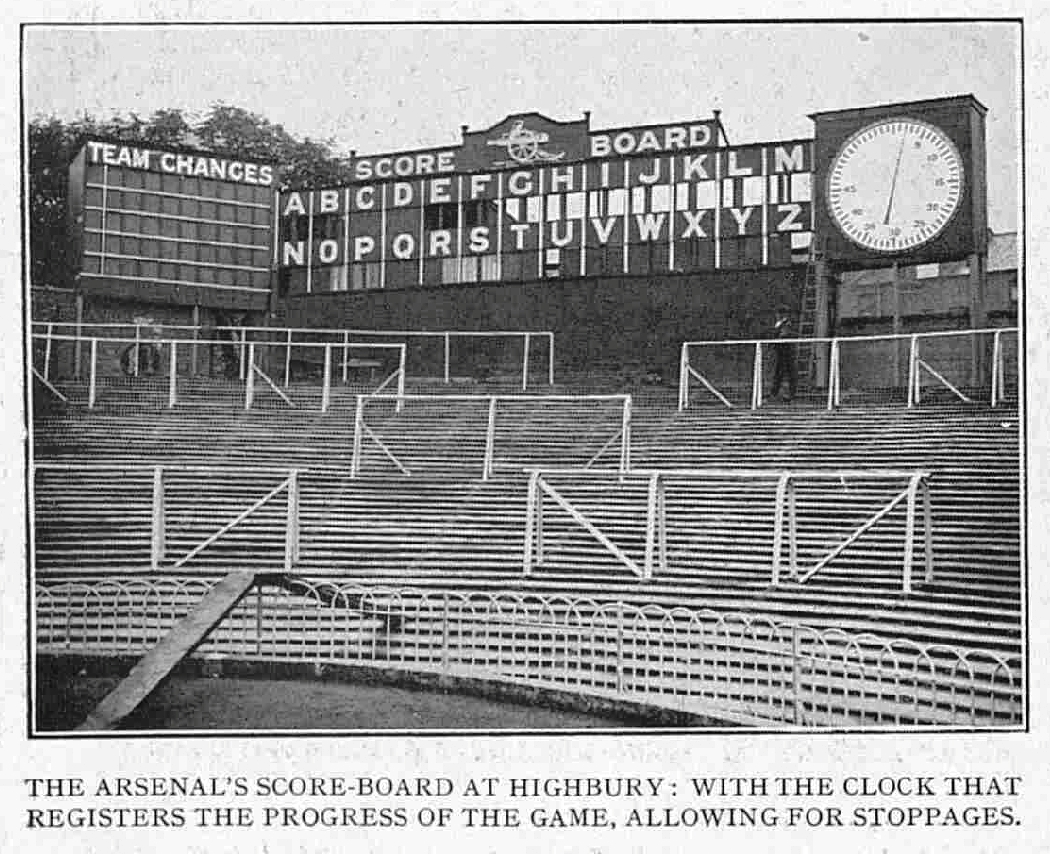
The Original Clock in the Information Centre at Highbury – 20 September 1930*
Andy’s intention to tweet the image was thwarted by a generic sports account that sent it out a few minutes prior to Andy’s busy schedule, so he RT instead.
Seeing the image led to fellow Gooner @fumbunker ask “was that in the south-west corner?” of Highbury, and our old friend and Highbury redevelopment guru AngryPhil got involved too.
Fumbunker, by now on a roll, also highlighted this image from the Aerofilms series, and if you look at this Aerofilm photo a scoreboard is clearly seen on the South West side of the ground.
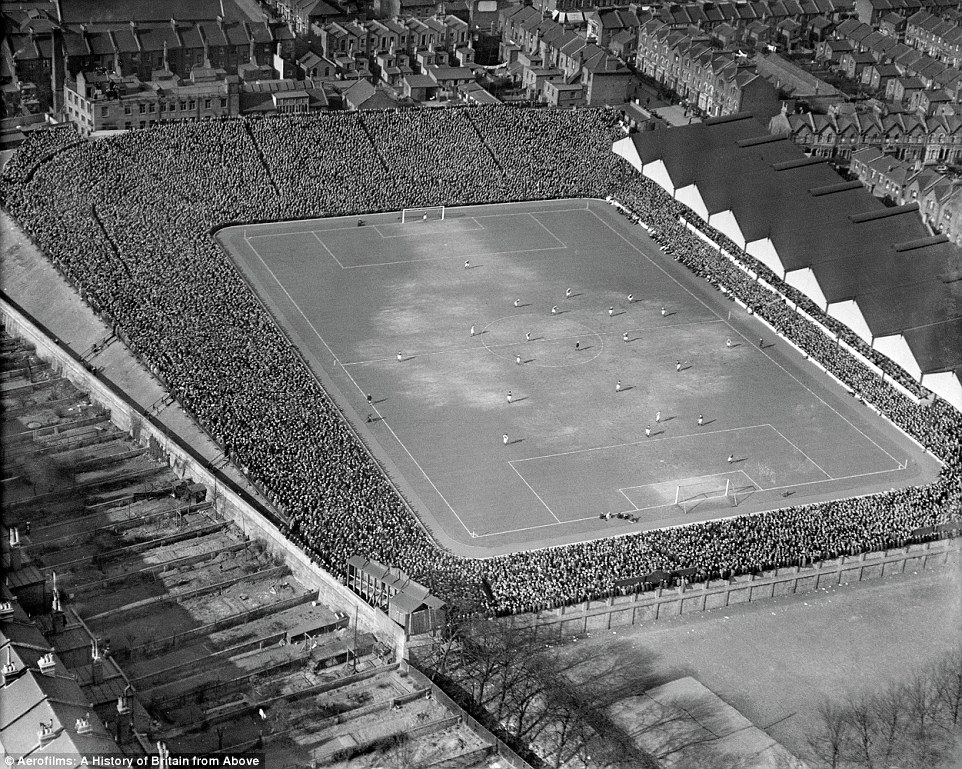
Aerofilms series from March 1929
Comparing the two photos there are trees lining behind the clock in the first photo which are also clearly shown behind the South-West side in the Aerofilm image. There are no such trees at the Northern end of the ground. Additionally the depth of the terrace below the information centre is pretty shallow unlike any part of the Northern terrace which was far deeper.
This got Andy and myself thinking and we have come up with the following clock revised detail:
The original clock was located next to the scoreboard on the West Terrace of the south-westerly Information Centre in September 1930.
It was then banned by the FA a month later and ordered to be covered up. In February 1931 the clock makers – Fishers – agreed with Herbert Chapman to alter the 45 minute mechanism to a 12 hour clock and, after FA approval, the new clock re-appeared in December 1931.
We are now pretty sure, that it was re-positioned on the Laundry End in December 1931. While we initially thought there was little point in moving it before the works all started in the close season, Andy then remembered a photo of an Alex James penalty in February 1932 that clearly denotes the clock in the background in the middle of the North terracing.
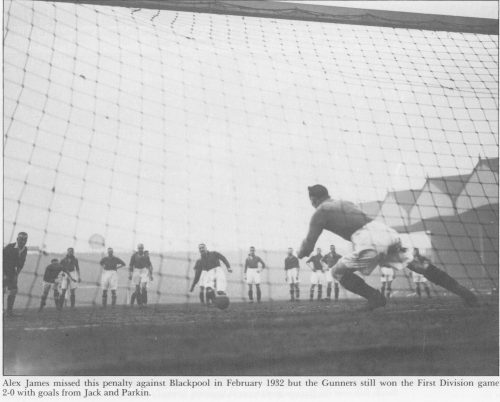
The Clock is in the distance of the North terrace in February 1932 (from Alex James: by John Harding)
The architect’s projected drawing of April 1932 of the new West Stand clearly shows the Clock in its position in the middle of the Laundry End, and no information centre remaining in the South West corner. The West Stand was officially opened in December 1932 but had housed some spectators for a number of months prior to this date.
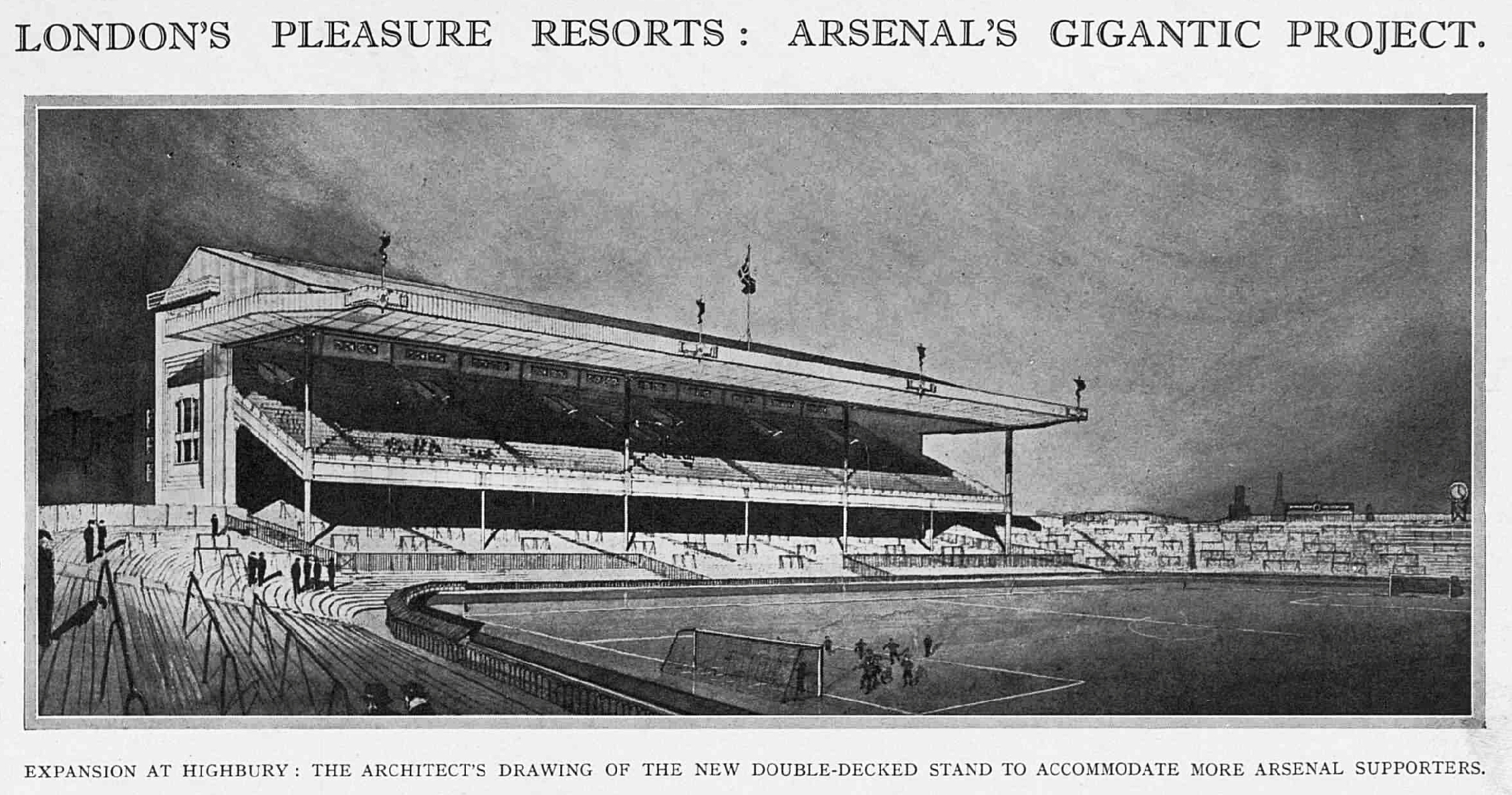
Architects planned drawing of the West Stand from Illustrated Sporting & Dramatic News 2 April 1932
A curious aspect of the papers that reported on the new clock in September 1930 was that the actual location was never recorded in any written publication. It is difficult to know just why the exact dimensions of the clock were recorded and the face of the clock given in detail but not where it was to go inside the ground. Maybe it was just assumed that those who needed to know where it was were actually inside the ground and knew it’s location anyway. This apparent lack of written evidence goes some way in explaining why all, including ourselves, had assumed the Clock initial location was on the Laundry End in 1930.
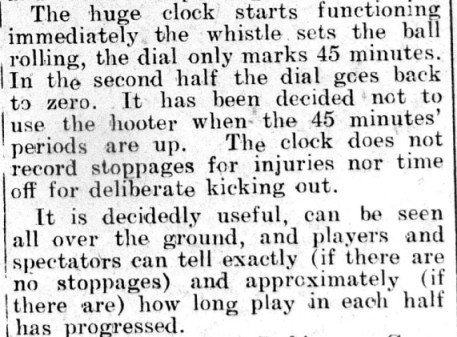
Islington Gazette 19 September 1930
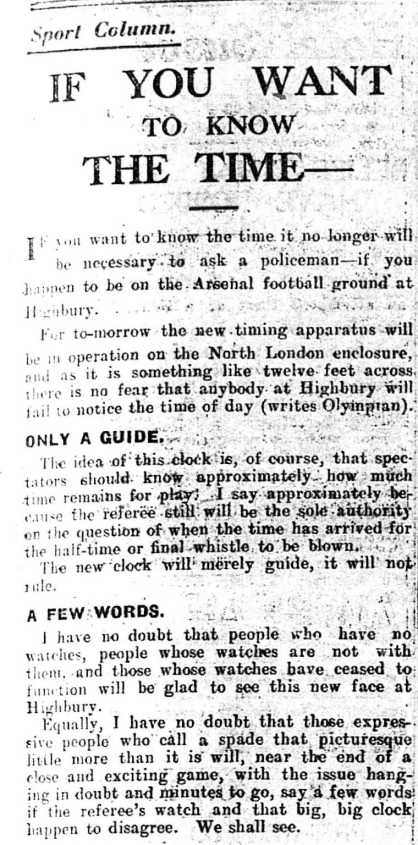
Evening Standard 19 September 1930
Therefore in light of the above we offer this as revised detail:
Highbury Clock Location Timeline
September 1930 – 45 minute clock placed on West Terrace.
October 1930 – Timepiece covered up on order of the FA.
December 1931 – Clock re-appeared directly on the Laundry End as a 12 hour timepiece (North Bank).
Summer 1935 – Clock moved to College End (Clock End).
Which just goes to show that with the continued opening of newspaper and other archive resources by the British Library onto the web, that received and assumed history will become ever more challenged.
Footnotes
*As an aside from the clock, those of us who are cannon aficionados immediately noticed the correct direction of the cannon in 1930.
Don’t forget to subscribe to the blog (top right). You know it makes sense.
Or have a look at our other site: The Arsenal Collection for more Arsenal memorabilia.
Copies of our books Royal Arsenal – Champions of the South and Arsenal: The Complete Record 1886-2018 are still available from the publishers.
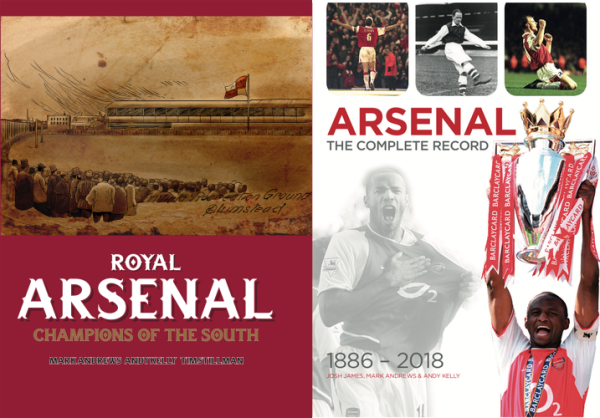

Good work as always. I’d imagine that at least part of the reasoning for the position of the scoreboard (and then clock) was that it faced the original East Stand when it was the only seated part of the ground and home to the Directors and all those prepared to pay for relatively expensive tickets.
Then when the West Stand was built they thought it better to have the clock in the middle of one end, first north and then south, so that both stands could see it.
Is it just my imagination, or might there be something to this: Looking at the aerial image of Highbury the style of play clearly shows up? It certainly looks like the wings were hardly ever used and play was centred on the middle of the park, with attacks going straight to goal over the penalty spot. It might just be a coincidence, but it also looks like more of the action took place at the Laundry end – where tradition tells me the Arsenal liked to score all their goals !
Great piece, really love these re-discovered facts and photos. What a wonderful history the Club has.
Cheers. All roads led to the goal. As Bastin was signed a few months after the overhead image was taken the pitch map probably did show some wing action in the 30s. But maybe not!
What a brilliant observation! Makes you wonder how much more there is in that picture that we haven’t noticed.
I wouldn’t be surprised to see a modern heatmap of action areas look fairly similar in terms of most used parts of the pitch, there’s a natural tendency for the players to be mostly in the middle. It does look like the Laundry End is a bit more worn though.
I think the picture is the 1929 FA Cup Semi-Final, Portsmouth v Villa, so we can’t work anything out from the formations!
You are correct Angry, it was taken during the 1929 SF
As an Arsenal fan since1956 it is always great toread details of the history of this great club. Thank you.
John
Cheers John.